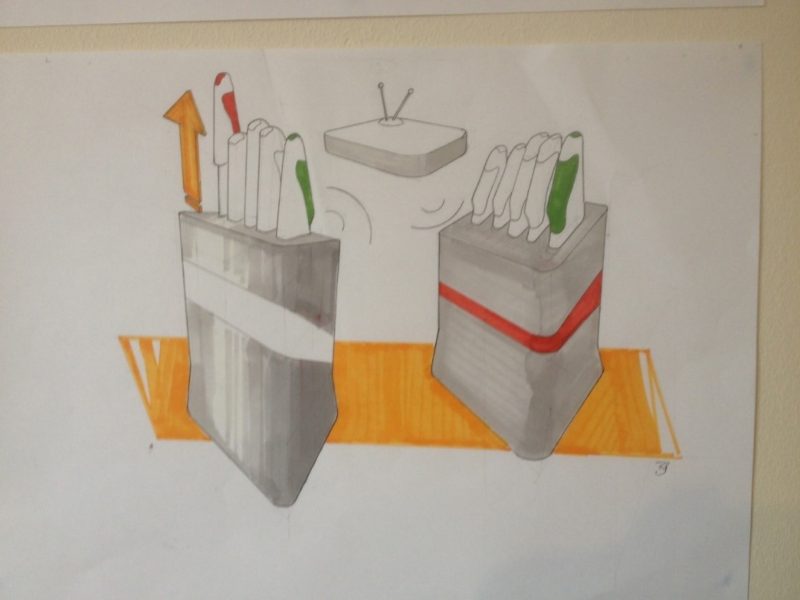University of Brighton student Benson Pocock took second place in this year’s Designing for the Future Competition with his 5 Knives Concept which aims to tackle malnutrition in older people.
Benson’s design is aimed at the 65+ demographic which is one of the biggest demographic cohorts today. In 2010 there were 524 million people worldwide aged 60 and above. This age group is predicted to increase by 50% in the next 20 years in Britain alone. In 2011 38% of this age group living in the community were reported to be either at risk or suffering from malnutrition. In hospitals it was a staggering 86%.
Benson concluded from his research that one of the main causes of malnutrition were loneliness and depression and he set himself the challenge of finding ways to incentivise and encourage the elderly to get back into the kitchen and start preparing healthy and nutritious meals again.
The product itself is a set of two kitchen knife blocks that are connected wirelessly. Each set has 5 knives, each with a specific blade for a certain food type. Each knife has an assigned colour, for example green for fruit and vegetables, red for meat and brown for bread. The holders have built in micro switches that detect when a specific knife is removed. This sends a signal to the other holder that illuminates the corresponding coloured LEDs.
One holder is given to the elderly user and the other is given to a friend or family member.
This connection works in two ways. For the elderly user the product is a way of connecting with friends or family. So when they are in the kitchen and they see their holder changing colour they know that the other person is in the kitchen too. Therefore they feel as if they are completing the previously lonely task, together.
For the other user, either a friend or family member, the holder is a way in which to monitor the eating habits of the elderly user, as well as connecting with them. There is an app for monitoring and recording the eating habits over a period of time. For example, if only the bread knife was being used then the friend or family member would be able to see a potential eating concern appearing and take precautions accordingly.
Student Peter Barr also considered using food as a way of initiating social interaction between older and younger adults and thus combating social isolation, loneliness and malnutrition among the solitary elderly population. With his product Forks for Friends, each user owns two halves of opposite sides of a knife and fork. These halves are placed into the unit (which automatically detects them and locks) and sits idle on a dining table or kitchen unit.
The user chooses a date and time that they would like to eat with the other person on the companion application. This invitation is then sent over to the other user who can then accept or decline. When a date is confirmed between the two, the unit communicates with the users’ smart device and syncs the date internally.
When the day comes around, an orange glow lights up a white ring on the outside of the unit, serving as a visual reminder of the dinner date. The user can then carry the product over to the other person’s house at the chosen time using the ergonomic handle. The partner products can detect each others’ presence when one is placed beside the other. This releases the cutlery, allowing the two opposite sides of the cutlery to come together with magnets. A social interaction through food is achieved.
As Peter explains :”This interaction also has the benefit of mitigating the onset of malnutrition, which is common among solitary living elderly adults. The presence of another person encourages the elderly user to eat a full, more nutritious meal”.



